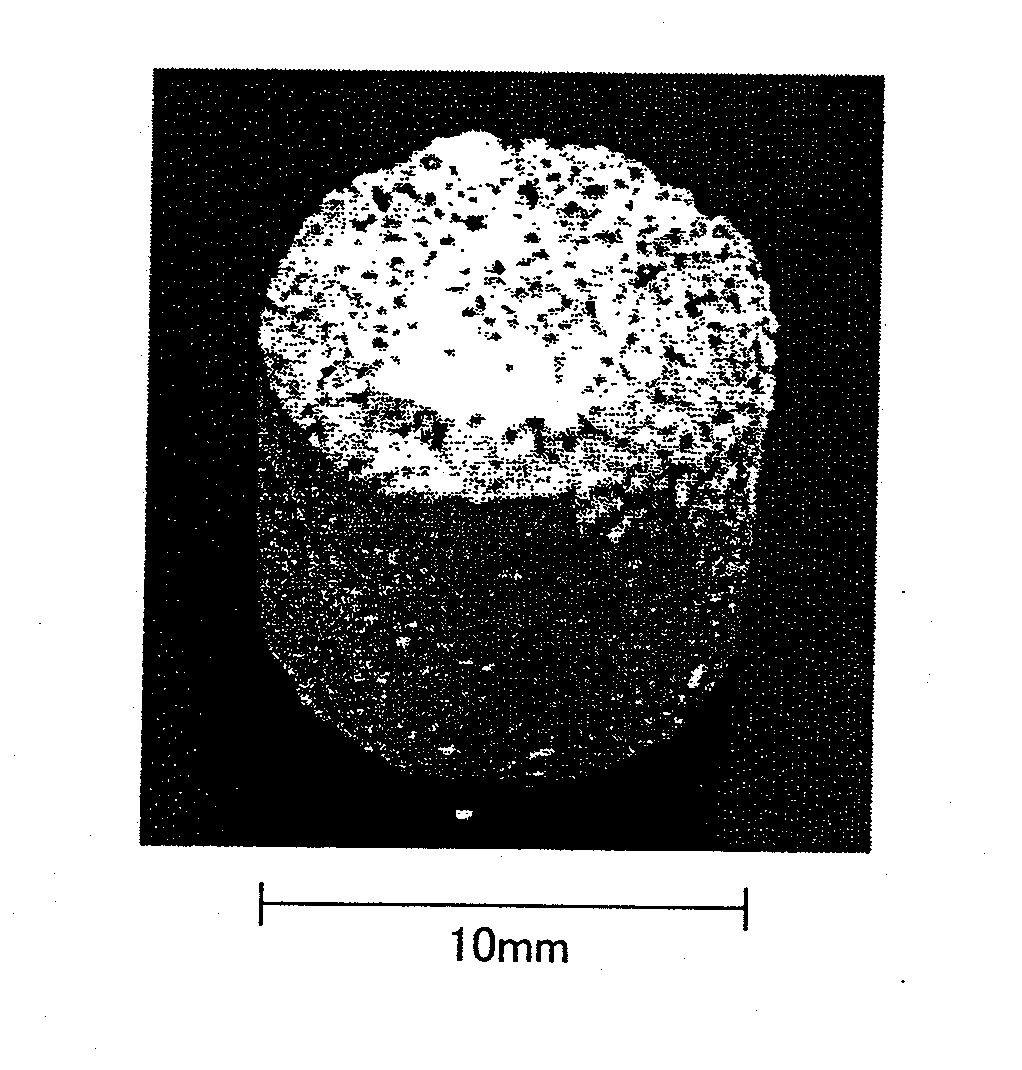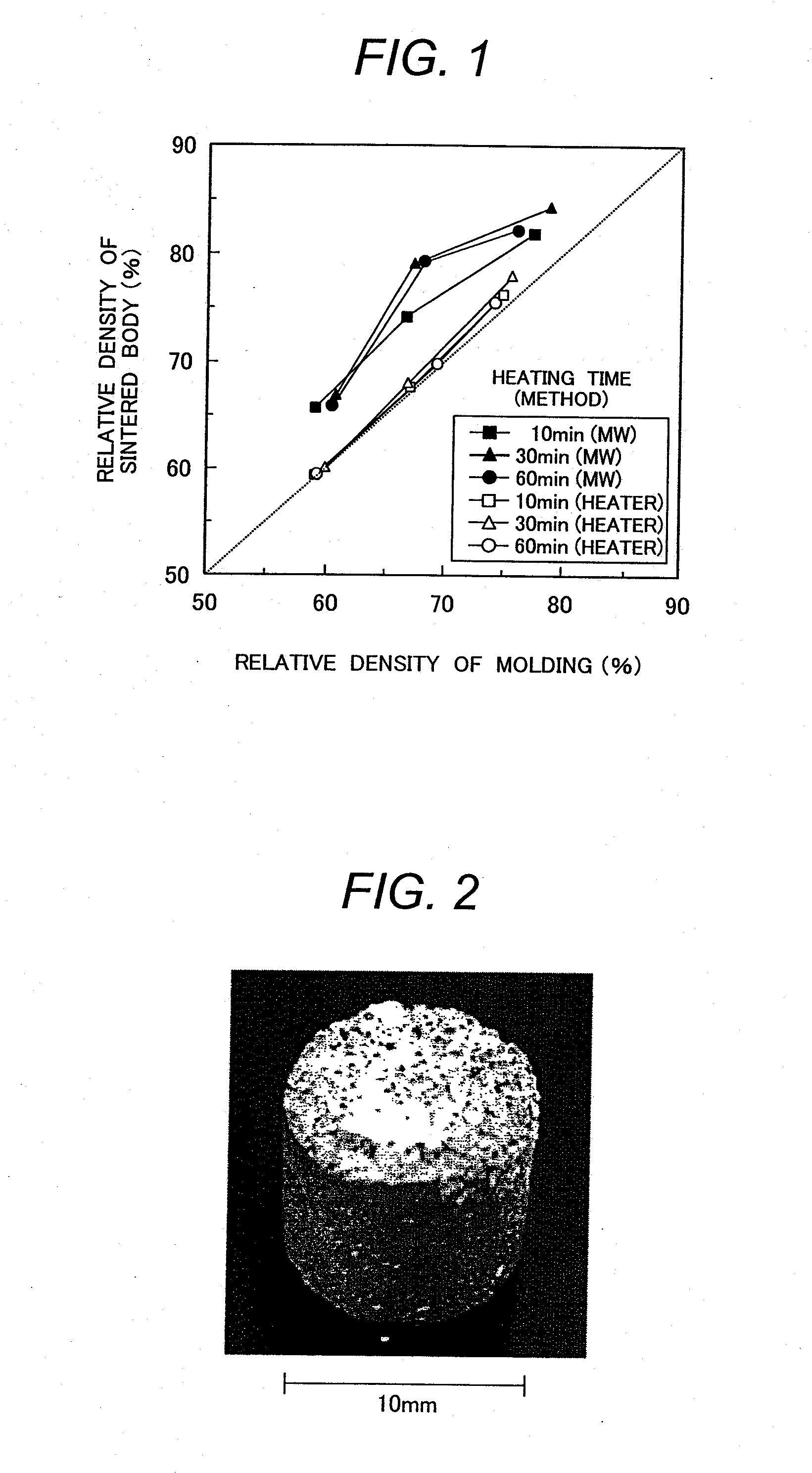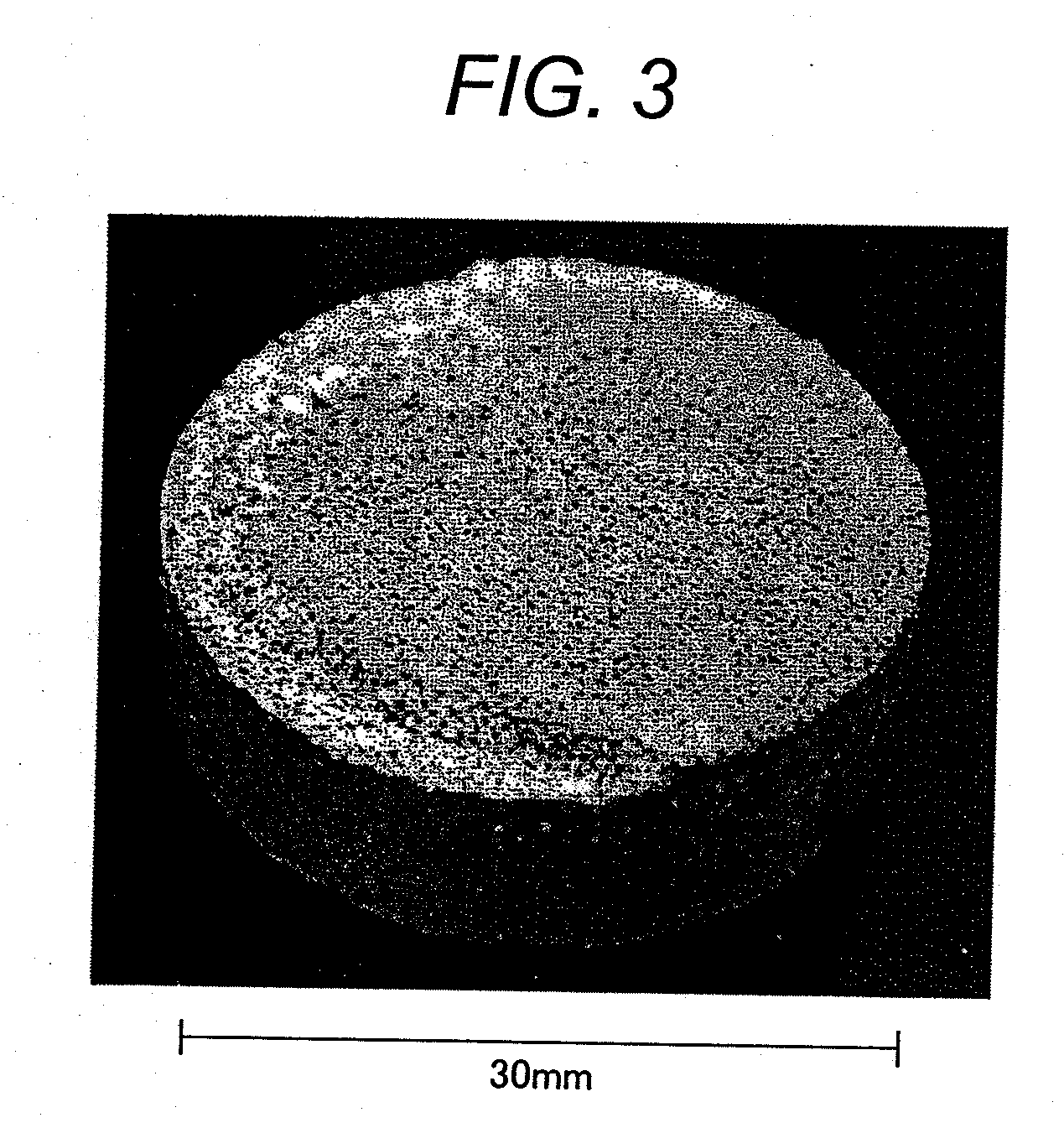Sintered porous metal body and a method of manufacturing the same
- Summary
- Abstract
- Description
- Claims
- Application Information
AI Technical Summary
Benefits of technology
Problems solved by technology
Method used
Image
Examples
example 1
[0075]Pure aluminum powder having a particle size of less than 3 μm and sodium chloride having a particle size of about 500 μm were mixed with a ball mill at a weight ratio of 1:3 to obtain a mixed powder. Then, the mixed powder was put in a graphite mold having an inner diameter of 10 mm and was pressed with a graphite punch to obtain a molding. A molding pressure was 200 MPa, and a relative theoretical density was 95%. Further, the molding was set in a microwave heating furnace (frequency: 2.35 GHz) together with a thermal insulator made of alumina. After a chamber was evacuated to vacuum, the chamber was purged with nitrogen gas to atmospheric pressure. While a temperature of the mold is being measured with a radiation thermometer, the molding was heated by irradiating the molding with a magnetic field by means of a single mode microwave furnace (output: not greater than 1 kW) for 20 minutes. After holding the molding at 450° C. for 10 minutes, the microwave output was stopped an...
example 2
[0076]Pure aluminum powder having a particle size of less than 3 μm and sodium chloride powder having a particle size of about 500 μm at a mixing ratio of 1:3 and silicon carbide powder having a particle size of 2 to 3 μm in an amount of 0.2% by weight were weighed.
[0077]The sodium chloride powder and the silicon carbide powder were mixed with a ball mill, and the aluminum powder was added to the mixed powder to obtain a mixed powder. The mixed powder was molded in the same manner as in example 1 to obtain a molding. Thereafter, the molding was subjected to irradiation of electric field and magnetic field at 2:8 with a microwave furnace (output: not greater than 1 kW) to heat the molding at an elevation speed of 100° C. / min. After holding the molding at 650° C. for 10 minutes, a microwave output was stopped and the molding was cooled in the furnace. After sintering the molding was subjected to ultrasonic washing in hot water to remove the sodium chloride to obtain aluminum porous bo...
example 3
[0078]Pure aluminum powder having a particle size of less than 3 μm and sodium chloride powder having a particle size of about 500 μm at a mixing ratio of 1:3 and silicon carbide powder having a particle size of 2 to 3 μm in an amount of 0.2% by weight were weighed.
[0079]After the sodium chloride powder and the silicon carbide powder were mixed with a ball mill, aluminum powder was added to further mix them. Then the mixed powder was put in a graphite mold having an inner diameter of 30 mm, and the mixed powder was molded w graphite punch at a molding pressure of 145 MPa to obtain a molding having a relative theoretical density of 89%. The molding was set in a milli-wave heating furnace (frequency: 28 GHz) together with a thermal insulator made of alumina.
[0080]After the chamber was evacuated, the chamber was purged with nitrogen gas to an atmospheric pressure. While a temperature of the molding was being measured, milli-wave was applied at an output of not greater than 1 kW at a te...
PUM
| Property | Measurement | Unit |
|---|---|---|
| Fraction | aaaaa | aaaaa |
| Fraction | aaaaa | aaaaa |
| Percent by mass | aaaaa | aaaaa |
Abstract
Description
Claims
Application Information
 Login to View More
Login to View More - R&D
- Intellectual Property
- Life Sciences
- Materials
- Tech Scout
- Unparalleled Data Quality
- Higher Quality Content
- 60% Fewer Hallucinations
Browse by: Latest US Patents, China's latest patents, Technical Efficacy Thesaurus, Application Domain, Technology Topic, Popular Technical Reports.
© 2025 PatSnap. All rights reserved.Legal|Privacy policy|Modern Slavery Act Transparency Statement|Sitemap|About US| Contact US: help@patsnap.com



